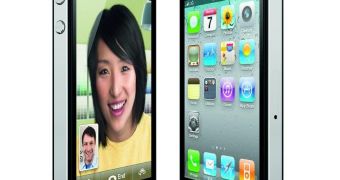The new iPhone 4 device from Apple seems to be one handset which can prove that mobile phone users tend to be loyal to the brand they are using. Most iPhone versions proved that in one way or another, yet the new iPhone 4 should remove any doubt. Out of the total number of iPhone 4 handsets sold on Thursday at AT&T, 77 percent were existing iPhone users, and 84 percent were existing AT&T customers.
For comparison, Piper Jaffray (PJC) analyst Gene Munster shows that only 56 percent of the iPhone 3GS buyers in 2009 were existing iPhone owners, up from the 38 percent iPhone users who purchased the iPhone 3G in 2008. Moreover, while 16 percent of this year's iPhone 4 buyers came from other carriers, the percentage is significantly lower than the 28 percent iPhone buyers who made the move last year.
“Apple is effectively building a recurring revenue stream, where iPhone users pay on average $200 year to stay current with the latest phone,” Munster wrote in a note to clients recently, a hot of press post on All Things Digital suggests. “While it's true that iPhone 4 is a more significant feature upgrade compared to the 3GS, and we expect this upgrade rate to decline next year, Apple has in three years built brand loyalty in the phone market that compels users to upgrade to the latest version and wait in line for one to six hours to pick up their iPhone.”
Along with Apple, wireless carriers that have iPhone-exclusivity deals are also benefiting from the increased customer loyalty. However, the fact that fewer US mobile phone users chose to leave their carrier for an iPhone 4 on AT&T's airwaves suggests there might not be too many other users interested in making the same move. In other words, Apple should consider making the iPhone available via a new wireless carrier in the US.
When it comes to the total number of iPhone 4 units sold during the first days of availability, here's what Munster states: “While we think Apple will sell between 1.0m to 1.5m iPhones in the first three days (including preorders), the actual number is largely irrelevant. Apple is tapping into the global consumer spending sweet spot, mobile, and as a result iPhone numbers are going higher in the coming years.”

 14 DAY TRIAL //
14 DAY TRIAL //